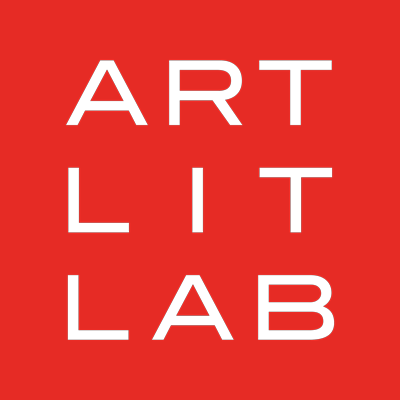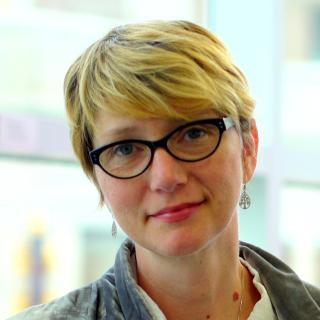René Magritte: Selected Writings, edited by Kathleen Rooney and Eric Plattner, University of Minnesota Press, $29.95
You discovered the writings of Magritte at a show at the Art Institute of Chicago. Can you tell me about that initial discovery and what kept you invested in his writings through to the completion and publication of this book?
Back in July of 2014, my friend and DePaul University colleague Eric Plattner and I went to the “Mystery of the Ordinary, 1926-1938” show of Magritte’s work hosted by the Art Institute. I’ve been a fan of Magritte ever since I was a kid, and I thought the show was excellent. Moreover, I was struck by the surprisingly high quality of the wall texts accompanying the paintings. I realized about halfway through the exhibit that the texts were so well-done because they were excerpts of Magritte’s own writing. I resolved that when they funneled us out through the gift shop I’d buy a copy of his book. To my dismay, there was no such book. Through a great deal of internet and international sleuthing and Skyping, I discovered that an English translation of Magritte’s writings had been commissioned and scheduled for publication in 1987 through John Calder’s Riverrun Press, but the publisher folded and the project fell through. So bizarrely, a fully translated (albeit rough and typewritten) manuscript of Magritte’s Selected Writings by the now-dead translator Jo Levy had been languishing in an archive in Caen, France for close to 30 years, unbeknownst to just about anyone. Thanks to the help of the librarian there, Alma Books (which held the rights to Riverrun’s catalogue) in the UK, and University of Minnesota Press here in the States, not to mention my phenomenal co-editor Eric, that manuscript is now a book, available to Magritte fans in English for the first time.
As for what kept me committed to the completion of the project, I’d say it was pure excitement—how had I been able to find something so major and important yet so unknown?—and a belief that this is a project that a lot of people will enjoy and benefit from. It’s a thrill to know that now, English-speaking Magritte enthusiasts and scholars will be able to read the artist’s work in their own language.
How did your research for this book change the way you thought about Magritte?
As I said, I’ve been a fan of his work for decades, I think because he’s such a writer’s painter. His work is equally as literary to me as it is painterly, predicated on language and wordplay and thematic associations. He’s really the ancestor of Conceptual Art, and his sensibility—witty, fun, playful, mysterious, thought-provoking, suggestive of narrative, and even argumentative—appeals to me deeply. So I’ve always admired him, but working on this book deepened my already deep admiration of his paintings, and caused me to learn a lot more about him as a person and a writer. I ended up being so inspired by his biography—his lifelong devotion to his wife, Georgette, and to their series of Pomeranian dogs, called Loulou—that I wrote novel in short pieces called The Listening Room, told from the alternating close third person perspective of both Georgette and the series of poms.
You quote Magritte as saying, “Mystery is not one of the possibilities of reality. It is what is absolutely necessary in order for reality to exist.” How would you say that Magritte defined mystery?
Mystery is perhaps the biggest theme of Magritte’s output, both visual and literary, and it was a delight to see him return again and again to the idea over the years of his career. He seemed to define mystery as a form of poetry—a super-saturation of sense and meaning in the world all around us, one which we are obligated to explore and engage through curiosity, even as we should remember, with humility, that we’ll never fully appreciate or understand the world. I think he was a great example, with this idea of mystery, of someone who understood the act of paying attention as a form of curiosity and love.
From this and other quotes, we see that mystery was of paramount importance to him, yet it seems that audiences today are even more resistant to mystery than they were at his time. Did you feel a resistance to it yourself? Did his writings on the subject change the way you thought about mystery, particularly in its relationship to art?
All I’ve ever wanted to be is a detective—I love solving mysteries like this one, or mysteries of the city, Chicago, which I love to walk around in, or mysteries of creative writing, like finding a topic or character no one else knows about and trying to understand it and bring it to light. So reading Magritte’s own writing about mystery felt as though I’d discovered a kindred spirit. Even though he died in 1968, well before I was even born, it was as though Magritte and I became friends—my ghost-friend, Magritte. As for the world’s resistance to mystery, I’m not sure what to say except that I believe that mystery is, by definition, inefficient—it is slow and strange and not best dealt with by metrics of speed or profit or productivity. So global capitalism does all in its power to destroy mystery or to distract us from it, and we can’t let that happen. We have to be curious about the world and its nuances and gray areas, especially now, in the Anthropocene. In this regard, a particular idea of Magritte’s from his essay “Surrealism in the Sunshine” strikes me as helpful:
Life is wasted when we make it more terrifying, precisely because it is so easy to do so. It is an easy task because people who are intellectually lazy are convinced that this miserable terror is “the truth”, that this terror is knowledge of the “extra-mental” world. This is an easy way out resulting in a banal explanation of the world as terrifying. Creating enchantment is an effective means of counteracting this depressing, banal habit.
Mystery permits us to be enchanted and to find new strategies of thinking and being.
Do you have a favorite piece in this collection?
My favorite piece is probably the weird prose poem “The Man with the Aimless Face.”
You have already published eight books, of poetry, fiction, nonfiction, and criticism, and that’s in addition to numerous articles and essays. Do you have a secret for juggling all of these interests and genres? For finishing projects?
It’s not a secret, probably, but something hard-wired into my personality to really love being busy and to getting immense satisfaction from finishing things. Reading, researching, and writing give me joy and connect me to the world and the people in it (living and dead), so it’s not hard for me to want to do it all the time. Also, the gears I tend to idle in tend to be anxiety and fear of death, so working on projects that I love and want to do before I die and that keep me from pointlessly worrying is a natural thing for me.
What are you working on now?
I’m finishing up a novel about World War I, told from the alternating first-person points-of-view of a secretly gay American war hero and a heroic female messenger pigeon who was mistaken her whole life as being male. Because America these days is in a state of what amounts to permanent global war, I’m especially interested in what violence does to the people—and animals—that nations and governments force to commit that violence. It sounds heavy, and it is, but it’s also funny sometimes.
Thank you so much for talking with us.

